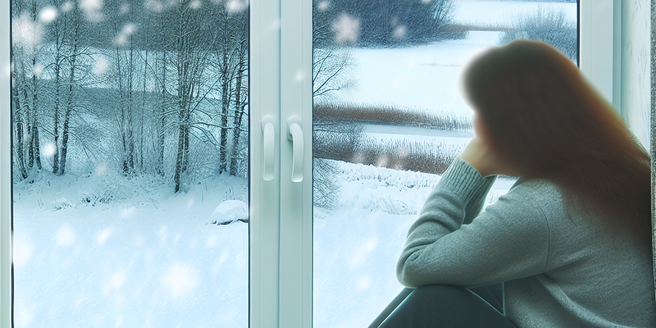
Understanding Seasonal Depression: An Overview
Seasonal Affective Disorder, also known as Seasonal Depression, is a mood disorder experienced by many during certain times of the year. It is estimated that about 5% of adults in the U.S experience SAD and it typically lasts for about 40% of the year. Individuals may start experiencing symptoms as the daylight hours begin to shorten, which is often in late fall or early winter. It typically occurs during the fall and winter months when there is less natural sunlight. Individuals who suffer from this disorder often experience depressive symptoms that impact their daily lives, including changes in appetite and sleep, feelings of hopelessness or worthlessness, a lack of concentration, and in some cases, thoughts of death or suicide.
The Connection between Weather and Mood Changes
Weather conditions significantly influence Seasonal Affective Disorder, or Seasonal Depression, primarily due to the lack of sunlight during the colder months. This absence of sunlight can affect our serotonin levels, responsible for regulating our mood, and disrupt our circadian rhythm, causing sleep disorders and further increasing feelings of depression. Gloomy weather with cloudy skies can also trigger emotional responses such as sadness or melancholy, contributing to feelings of depression. Conversely, a sunny day with clear skies usually promotes positivity. In essence, weather significantly impacts our emotional well-being and internal balance, with the lack of sunlight and gloomy weather conditions leading to feelings of sadness, gloom, and depression due to changes in our serotonin levels and sleep-wake cycle. Therefore, the link between weather and seasonal depression is undeniable.
How Weather Affects the Severity of Seasonal Depression
Seasonal Depression, or Seasonal Affective Disorder, affects a significant number of people whose emotional state is significantly impacted by changes in seasonal weather patterns, particularly as winter approaches. For these individuals, aspects like mood, vigour, and sleep cycle drastically shift in response to changes in climate. The main trigger appears to be reduced sunlight availability, which impacts mood and energy levels. As the daylight hours progressively shorten in autumn and winter, the decreased sunlight disrupts the brain’s serotonin production, the hormone impacting mood. Reduced sunlight during the day can therefore lead to a decrease in serotonin levels, causing feelings of sadness and a lack of motivation. Concurrently, the decreased sunlight also stimulates the increased production of melatonin, a hormone that regulates sleep patterns and internal body clock. With shorter daylight hours during winter, increased melatonin production can cause increased lethargy and fatigue, exacerbating depressive symptoms. The balance of serotonin and melatonin, influenced by sunlight, plays a crucial role in individual emotional, physical, and mental well-being.
Methods of Coping with Seasonal Depression in Different Weathers
Seasonal Depression affects countless individuals globally but various strategies are available to manage this form of depression, especially during the darker, colder months. A widely acknowledged method is Light therapy which involves exposing the patient to artificial light for regulated durations, stimulating brain chemicals for mood control and lessening depressive symptoms. Psychotherapy, particularly Cognitive Behavioural Therapy (CBT), is also effective in dealing with Seasonal Affective Disorder; it helps individuals identify negative thought patterns and shift towards a more positive outlook, thus reducing their depressive symptoms. Furthermore, adopting a healthy lifestyle with regular physical activity and a balanced diet can facilitate good body functioning and release ‘feel-good’ hormones. Spending time outdoors is advocated even in cloudy or cold weather; it helps to anchor the body’s internal clock, promote Vitamin D absorption, encourage a positive mental state, and alleviate the symptoms associated with Seasonal Depression.
The Future of Research in Weather-Related Seasonal Depression
Scientific investigations in the behavioral health sector are crucial to uncover innovative methods to combat Seasonal Depression, a condition often triggered by weather changes. Further research into the complex relationship between different weather patterns and consequent emotional changes is needed, as well as the profound biological mechanisms that link these two factors. Developing new, effective treatment modalities and preventative approaches specifically for seasonal affective disorder will require the behavioral health community to focus more on these aspects. Unearthing these hidden elements will enhance our understanding of how external environmental changes and internal mood alterations intersect and impact each other. Knowledge of these interactions paves the way for developing novel therapeutic strategies to counteract this mood disorder’s adverse effects. By devising cutting-edge interventions that address specific weather-related triggers, we can potentially improve the mental wellness of many affected individuals. In doing so, our understanding of Seasonal Depression’s inner workings will be broadened and its influence on mental health mitigated, thus enabling us to provide improved care for those affected and refining the mental health infrastructure.
